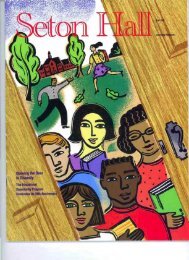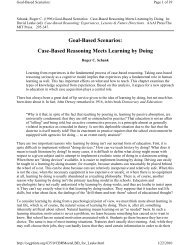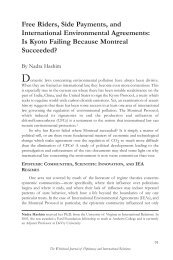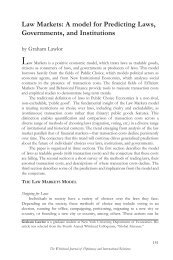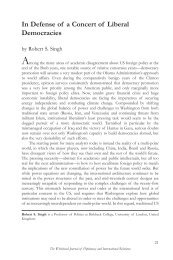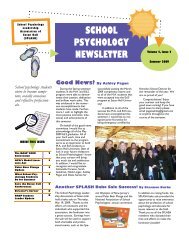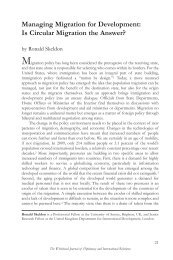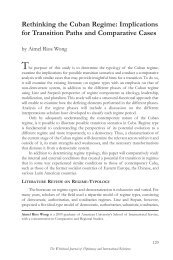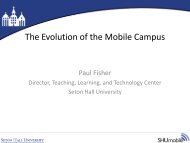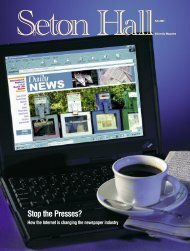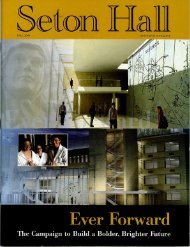Seton Hall Magazine, Winter 2000 - Seton Hall University
Seton Hall Magazine, Winter 2000 - Seton Hall University
Seton Hall Magazine, Winter 2000 - Seton Hall University
Create successful ePaper yourself
Turn your PDF publications into a flip-book with our unique Google optimized e-Paper software.
I n f o r m a t i o n T e c h n o l o g y<br />
Academic traditions are centuries<br />
old. A sudden and dramatic departure<br />
from past educational practices,<br />
a revolution has yet to take place,<br />
although the specter of such change<br />
looms on the horizon. For all the truly<br />
phenomenal changes that are happening<br />
with new technologies, higher education<br />
as an institution remains remarkably<br />
resilient. As one of the oft-heard remarks<br />
about technological change in teaching<br />
admonishes, “One can measure the pace<br />
of innovation in higher education by<br />
noting the 40 years it took to move the<br />
overhead projector out of the bowling<br />
alley and into the classroom.” Nonetheless<br />
technology is reshaping the tools of<br />
inquiry at <strong>Seton</strong> <strong>Hall</strong> <strong>University</strong>.<br />
First an assessment: Where did<br />
<strong>Seton</strong> <strong>Hall</strong> stand relative to other<br />
American colleges and universities<br />
at the end of the 20th century? The<br />
respected Campus Computing Project<br />
survey (by Kenneth C. Green) found:<br />
• more than two-fifths of college<br />
courses used e-mail, while one-third<br />
of college courses drew on content<br />
from the World Wide Web;<br />
• more than 40 percent of the nation’s<br />
colleges had some sort of computer<br />
literacy or computer competency<br />
requirement;<br />
• over 60 percent of public four-year<br />
institutions had a mandatory information<br />
technology (IT) fee;<br />
• more than three-fourths of the twoand<br />
four-year colleges had IT support<br />
centers to assist faculty with instructional<br />
integration; and<br />
• almost one-half of the nation’s colleges<br />
had a formal plan to use the<br />
Internet for marketing the institution<br />
22 SETON HALL UNIVERSITY MAGAZINE<br />
The 21st Century <strong>University</strong>:<br />
Revolution or Evolution?<br />
BY PHILLIP D. LONG, PH.D.<br />
to prospective students; more than<br />
half have some portion of the undergraduate<br />
application available to<br />
prospective students on the World<br />
Wide Web.<br />
<strong>Seton</strong> <strong>Hall</strong> scored five for five<br />
from this list as we moved into the<br />
21st century.<br />
We face significant challenges as<br />
information technology continues<br />
to reach into our culture, business and<br />
entertainment. Conventional responses<br />
to increasingly unconventional challenges<br />
— challenges that involve<br />
demography and access, lifelong<br />
and distributed learning, institutional<br />
finances and public policy, will lead<br />
some universities to resemble old generals<br />
planning for the last war, not current<br />
battles. <strong>Seton</strong> <strong>Hall</strong>, in contrast, has<br />
launched its IT-enabled future.<br />
In the last four decades, information<br />
technology has emerged as an accepted<br />
part of the higher education experience.<br />
In 1996, <strong>Seton</strong> <strong>Hall</strong> began to pilot<br />
mobile computing, providing incoming<br />
students with IBM ThinkPad ® notebook<br />
computers in the context of an<br />
academic curriculum to integrate the<br />
opportunities of technology into teaching.<br />
As we turn toward the next century,<br />
ubiquitous computing at <strong>Seton</strong> <strong>Hall</strong><br />
will place information resources into<br />
the hands of our students nearly anywhere,<br />
anytime they seek it.<br />
In the 21st century, new forms of<br />
distributed learning will thrive. Higher<br />
education’s traditional categories of<br />
research universities, residential colleges<br />
and community colleges are expanding<br />
to include online degree programs.<br />
With that expansion will come new<br />
players in the game. Some spring from<br />
within the traditional walls of colleges.<br />
Others will emerge from new quarters,<br />
such as nonprofits as well as for-profit<br />
commercial businesses.<br />
Students will continue to go to residential<br />
colleges for the contextual experience<br />
of academe. We will have the joy<br />
of planning for <strong>Seton</strong> <strong>Hall</strong>’s bicentennial<br />
(200th) anniversary. A visitor walking<br />
across the <strong>University</strong> Green early in the<br />
third millennium might see students<br />
using an increasingly wide array of<br />
personal digital assistants (e.g., next<br />
generation Palm Pilots), cellular communications<br />
devices and wearable computers.<br />
(No need to carry what can be comfortably<br />
worn.) Traditional paper books,<br />
I’m happy to say, will remain a prominent<br />
information delivery device.<br />
However, textbooks and reference books<br />
with limited information will give way to<br />
e-books, with annotation, Web-enabled<br />
hyperlinks and wireless connections to<br />
the knowledge aggregator (formerly<br />
known as publishers when such information<br />
was quaintly considered static).<br />
Through the continued pioneering<br />
efforts of our talented faculty, and with<br />
the sustained support from our academic<br />
administration, we will learn to more<br />
effectively apply information technology<br />
tools to foster creative thinking and<br />
learning. Such skills will become increasingly<br />
valuable as our students experience<br />
an average of five career changes<br />
throughout their working lives. Our<br />
community of learners will extend well<br />
beyond the brick and mortar walls as a<br />
blend of wireless and wired terrabit<br />
networks expands into lectures, laboratories<br />
and seminars. Other experts and<br />
leaders will join our faculty in scholarly<br />
study from worldwide disciplinary<br />
communities of practice to mentor our<br />
students and demonstrate learning as<br />
a lifelong activity.<br />
Phillip D. Long, Ph.D., is<br />
executive director of the Teaching<br />
and Learning Technology Center<br />
and the Institute for Technology<br />
Development.



